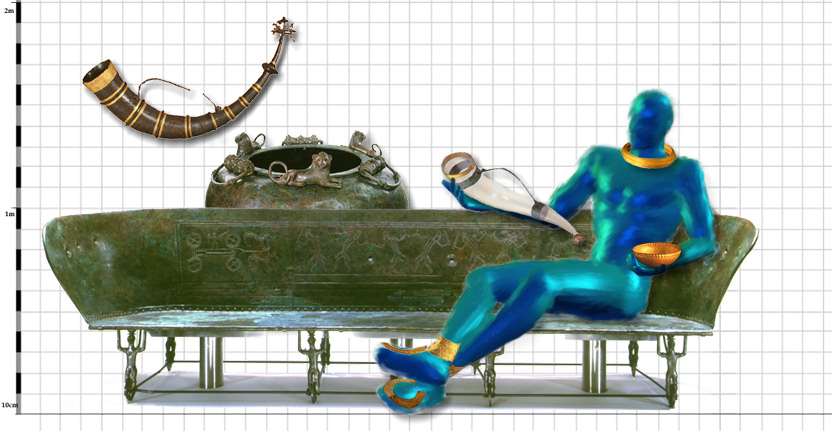
Site, context
Tumulus
Chamber and finds
Style
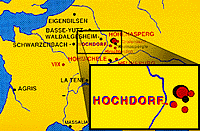 of tumuli, most of which have not been excavated, ca.
10 km due west of the Hohenasperg. The latter, a six-hectare
plateau ca. 100 m. above the gently-rolling countryside,
is visible from a great distance. Having been continuously
occupied since the Middle Ages, with many phases of
construction, some extending down to bedrock, it has
not been excavated and there appears to be no prospect
of major archaeological evidence to be found there.
The Hohenasperg was most probably the main seat of
government of the of the population on the plains below,
perhaps a gathering place for mercantile or religious
activity, perhaps also a fortified place of refuge.
Aerial photography has revealed many more tumuli under
the adjacent fields than have been excavated; most
have been plowed flat. The tumulus at Hirschlanden,
south of Hochdorf, dates to the Hallstatt period (6th
c.). There the ring of stones around the circumference
of the tumulus and the statue that originally stood
on top have been preserved. A later stele (Late Hallstatt
D-La Tène A) was found nearby at Holzgerlingen.
Further Hallstatt-period finds have been made to the
south and east, around Bad Cannstatt and Ludwigsburg,
in addition to the important early La Tène
princely tomb of the Kleinaspergle. Finally, Roman-period
of tumuli, most of which have not been excavated, ca.
10 km due west of the Hohenasperg. The latter, a six-hectare
plateau ca. 100 m. above the gently-rolling countryside,
is visible from a great distance. Having been continuously
occupied since the Middle Ages, with many phases of
construction, some extending down to bedrock, it has
not been excavated and there appears to be no prospect
of major archaeological evidence to be found there.
The Hohenasperg was most probably the main seat of
government of the of the population on the plains below,
perhaps a gathering place for mercantile or religious
activity, perhaps also a fortified place of refuge.
Aerial photography has revealed many more tumuli under
the adjacent fields than have been excavated; most
have been plowed flat. The tumulus at Hirschlanden,
south of Hochdorf, dates to the Hallstatt period (6th
c.). There the ring of stones around the circumference
of the tumulus and the statue that originally stood
on top have been preserved. A later stele (Late Hallstatt
D-La Tène A) was found nearby at Holzgerlingen.
Further Hallstatt-period finds have been made to the
south and east, around Bad Cannstatt and Ludwigsburg,
in addition to the important early La Tène
princely tomb of the Kleinaspergle. Finally, Roman-period 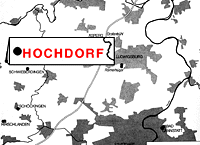 sites include a fascinating wood-fenced enclosure at
Fellbach-Schmiden, apparently a cultic temenos ("Viereckschanze")
or an open-air temple of the second century B.C.E..
The contents of a deep well shaft inside the enclosure
include monumental sculptures of stylized deer and
goat-like creatures rearing up on their hind legs [see
Methoden und Ergebnisse Exhibition Catalog 1985, 339
ff.].
sites include a fascinating wood-fenced enclosure at
Fellbach-Schmiden, apparently a cultic temenos ("Viereckschanze")
or an open-air temple of the second century B.C.E..
The contents of a deep well shaft inside the enclosure
include monumental sculptures of stylized deer and
goat-like creatures rearing up on their hind legs [see
Methoden und Ergebnisse Exhibition Catalog 1985, 339
ff.]. There is strong evidence from the pattern of burials of continuity of occupation of the Hohenasperg and its surrounding countryside. Although the archaeological record is extremely spotty -- as is to be expected in an area that has been under intensive cultivation and construction for centuries.
Hochdorf:
Tumulus
Chamber and finds
Style
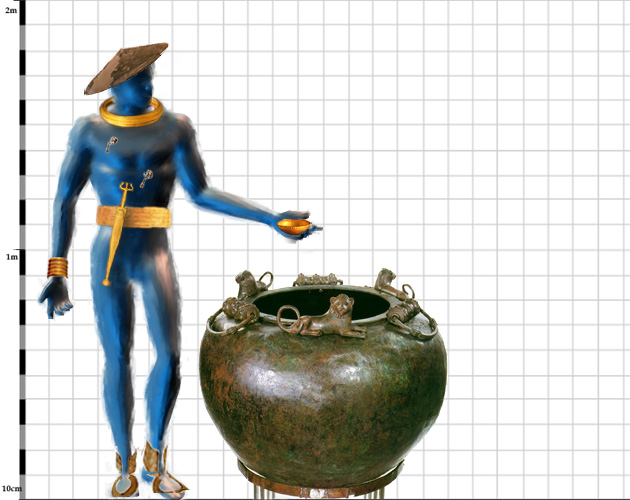

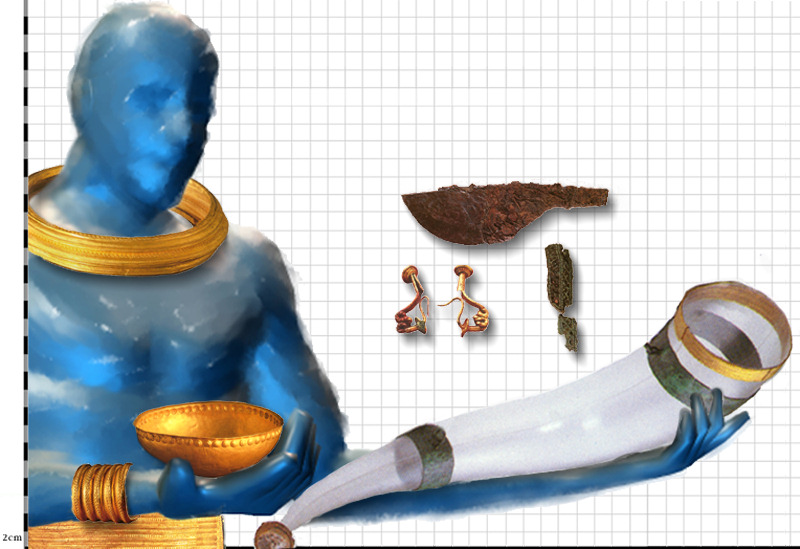
For more information, visit the Hochdorf Museum Site.
Draft date (none)